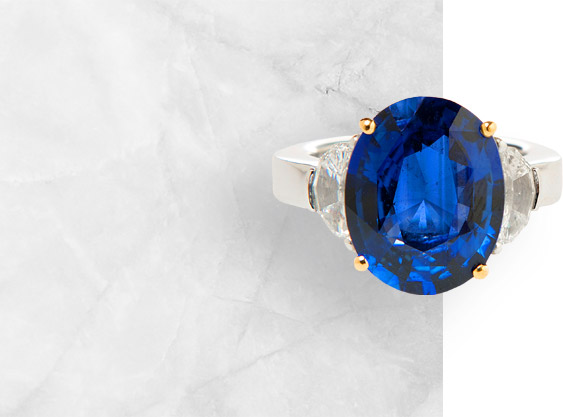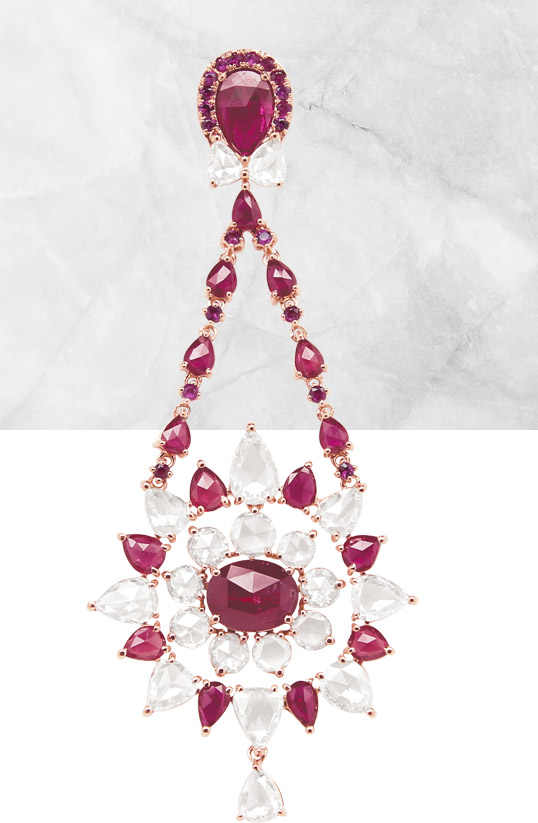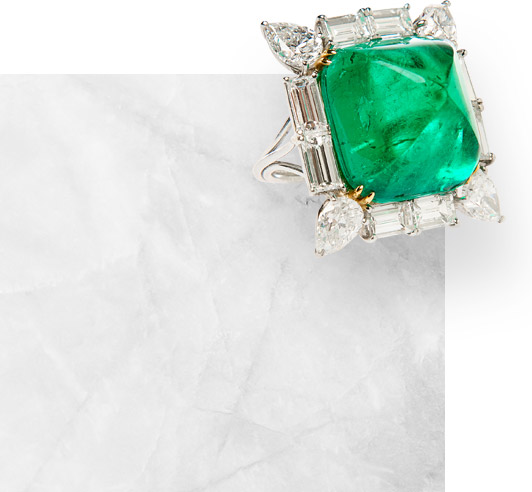COLOR STONES
THE COLOR OF LUXURY

SAPPHIRES
Sapphires belong to the taxonomy of Corundum and they can be found in nature, literally, in all the rainbow colors. However, when we think of sapphires, our mind goes to the color blue; therefore sapphires of any color other but blue, are characterized as “fancy sapphires”. From all the fancy color diamonds, sapphires are the most popular. In terms of price setting, their colors is the most determinant element. According to the Gemological Institute of America, the more valuable sapphires are the ones in dark or medium tones of blue and high color intensity. Despite the intensity of the color, what is remarkable is that the brightness of the gem remains intact.
Similarly to diamonds, the clarity of the gems-meaning the number of inclusion and the extent they impact the sapphire durability is of high importance. Obviously, the clearer the gem, the higher its value. When it comes to appearance, what determines the valuation is the cut, as the proportions and symmetry define the final color and its interplay with the light.
One more element when selecting sapphires, contrary to other precious stone, is their hardness and toughness (9/10 in the Mohs Scale). This element prolongs their life cycle and makes them a safe choice even for everyday jewelry.
The value of a sapphire varies and it goes without saying that you should consult an experienced gemologist that you trust. Indicatively, 99% of sapphires undergo processing to obtain their uniform color. These sapphires usually come from Thailand, Cambodia and Australia. Consequently, the remaining 1% that is intact, away from any kind of processing, can reach very high prices. These gems are usually mined in Cashmere, Myanmar and Sri Lanka.

RUBIES
In the category of Fancy Color stones, rubies are the highest valued, usually reaching prices that are record breaking in the auction world. Naturally, this makes them the “king” of the precious stones. Similarly to sapphires, it is classified under the corundum minerals. The color of the ruby is the result of chromium quantity, and it is indicative of its quality-with colors variations from orange-red to purple-red. The closer to the edge is the color found, the lower the value of the ruby. A balanced red, not too dark either too light is considered to be the ideal and it is called “Pigeon blood red”.
Nearly every ruby’s color is processed with the Heat Treatment. It is an acceptable and expected process, when the jeweler refers it early and clearly to the customer, certainly before the purchase. Obviously, the really few rubies that haven’t undergone any process and their colour is completely natural, they are extremely rare and high priced.
Clarity remains important in rubies, too, as it determines the transparency of the stone, and ultimately its value. When it comes to cut, rubies have the shape of a crystal at the time of their mining, so in a way the cut is decided already. But, craftsmanship and know how are still very important so that the proportions and symmetry will highlight its red color.
Although some ares are famous for the high quality rubies they produce, like Mianmar, Himalaya and North Vietnam, these gems can also be found in Thailand, Sri Lanka and Cambodia.

EMERALDS
Emeralds are classified under the Beryl minerals.
As in every fancy colored stone, color determines the quality, thus the value, of the emerald. Bright green, which is intense but not too dark, and uniformly allocated in a way that becomes transparent, it is definitely the ideal color. Chromium, vanadium and iron give the color to the emeralds. When chromium or vanadium dominates, the gems are greener. While when there is more iron than any other element, emeralds become blue-green.
Generally speaking, emerald always have intense inclusions, that are even visible to the naked eye, so an emerald is considered rare, when it has a smaller quantity of them. However, since the absence of inclusion is not common, gemologists are always very cautious when they see immaculate emeralds. The more popular cut is the one named “emerald” after the stone itself, exactly because it highlights the warm, green color, without the need to take away parts of the raw material.
When it comes to emeralds, the goal of any process is to minimize the inclusions, in an effort for transparency and clarity of the stone. (Oil treatment)
Popular emeralds come usually from Colombia, but they can also be found in other areas, like Brazil and Zambia.
